Stem Cell Therapy in Indonesia
Search and Compare the Best Clinics and Doctors at the Lowest Prices for Stem Cell Therapy in Indonesia
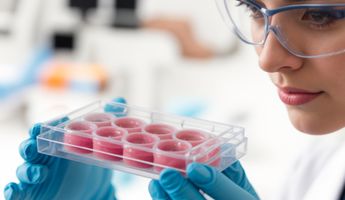
Find the best clinics for Stem Cell Therapy in Indonesia
No clinics available
Malaysia offers the best prices Worldwide
Price: $ 530

- Home
- Indonesia
Compare Before & After Photos of _procedure_photos.phpStem Cell Therapy
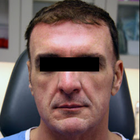
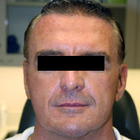
Front view
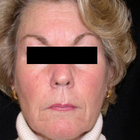
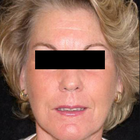
Front view
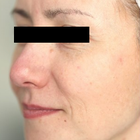
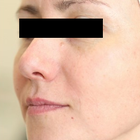
Half-side view
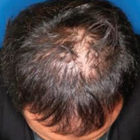
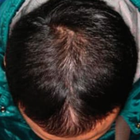
Front view
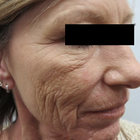
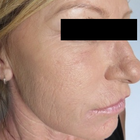
Half-side view
WHY US?
At Medijump, we're making medical easy. You can search, compare, discuss, and book your medical all in one place. We open the door to the best medical providers worldwide, saving you time and energy along the way, and it's all for FREE, no hidden fees, and no price markups guaranteed. So what are you waiting for?

Free

Best Price

Widest Selection

Risk-Free
What you need to know about Stem Cell Therapy in Indonesia
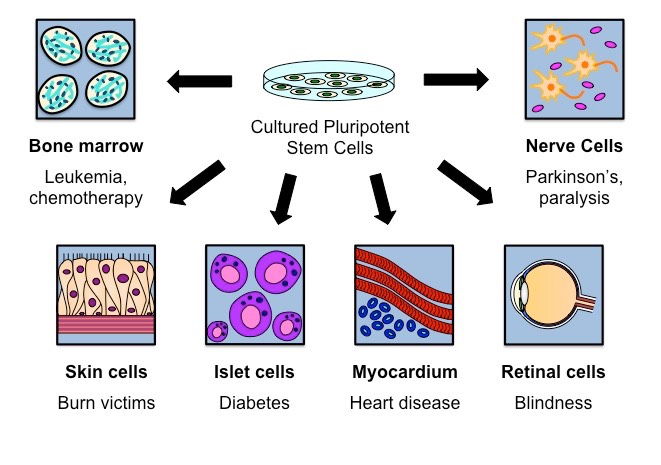
Stem Cell Therapy involves the use of stem cells to treat different diseases. These are non-differentiated cells of a multicellular organism. All the cells in the body are specialized for a specific function but they are the only cells without an assigned function. They can differentiate into any type of cell as and when required by the body and can proliferate rapidly to produce multiple copies of a specific type. Sources of stem cells are embryos and adult body tissues. In the adults, stem cells are present in bone marrow, brain, liver, skin, skeletal muscles, blood and blood vessels. While embryonic stem cells are derived from a blastocyst. Nowadays, the Umbilical cord is being stored under suitable conditions to get stem cells from it if needed. This is useful as chances of transplant rejection are less because stem cells are derived from your own umbilical cord.
Bone Marrow Transplant is the most commonly used method to treat various types of cancers such as lymphoma, multiple myeloma, and leukemia, etc. through stem cells. It is also used to treat brain diseases, cardiovascular diseases and cell deficiencies such as diabetes mellitus. Recently, anti-aging stem cell treatments have gain fame. It is used to restore your youth and beauty.
What is the cost of Stem Cell Therapy in Indonesia?
The price of stem cell therapy, also known as Stem Cell Therapy, can fluctuate greatly based on factors like the intricacy and specifics of the procedure, the particular health issue being addressed, and the geographic site of the therapy center or clinic. When compared to conventional therapies, stem cell therapy's cost tends to be rather steep.
Yet, when considering the prospective benefits and potential long-term economic advantages, an increasing number of patients are choosing this therapeutic approach. It's crucial to mention that, although certain health insurance firms may cover the expenses of stem cell therapy for specific situations, a number of them do not due to the considerate speculative aspect of the therapy.
What does a Stem Cell Therapy Procedure Involve?
The procedure of stem cell therapy starts with removing stem cells from your body or from the donor’s body. The cells are collected from different body parts depending upon the need. After collection, the cells are processed according to the purpose for which they are extracted. The processed stem cells are injected into the specific area of your body using ultrasound or X-ray guidance. Anesthetics are used and the procedure is done under sterile conditions. It is necessary to make sure that the cells are reaching the desired area so that the improvement is better and quicker. There are three types of stem cell transplant:
- Autologous transplant - your own body stem cells are removed and used. This type of transplant is safer and recovery is quicker because chances of transplant rejection are less as your own stem cells are being used.
- Allogenic transplant - stem cells are obtained from a suitable donor. Matching is done to find a donor whose white cell antigen closely resembles yours. The donor can or cannot be your relative.
- Syngeneic transplant - stem cells from your identical twin are used. In this case, the chances of rejection are low.
Each type of stem cell transplant involves different methods, procedures, and techniques with different side effects and risks. The one suitable for you depends upon your age, health, and physical conditions.
How Long Should I Stay in Indonesia for a Stem Cell Therapy Procedure?
The length of stay in the hospital varies in accordance with the condition for which stem cell therapy is being done. It is usually a 3 to 4 hours procedure (in-patient) in which stem cells are introduced into the body using syringes or catheters. Different factors are considered to decide the length of your stay in the hospital. These factors are:
- You are not suffering from a fever for the last 24 to 48 hours.
- You have a safe blood cell count.
- You are able to eat and drink.
- Your symptoms such as nausea, vomiting, and diarrhea are under control.
- You have someone with you to look after you.
Your stay in the hospital is longer for an allogeneic transplant as compared to an autologous transplant and you're free to leave Indonesia the very next day, although it's advised to stay at least a few days in case you have further questions for the medical staff. But of course, these can be asked over the phone/email or directed towards your local medical team back home.
What's the Recovery Time for Stem Cell Therapy Procedures in Indonesia?
Complete recovery time varies from 2 to 12 weeks when the patient begins to feel pain relief. However, you can return to your routine work a couple of days after going through the transplant. Recovery depends upon your physical condition before and after the transplant. Over a period of 6 to 12 months, further improvements are seen in the patients. During the process, antibiotics and other drugs are prescribed. These drugs prevent transplant rejection and graft-host diseases. Allogenic stem cell transplant takes longer to recover than an autologous transplant.
What sort of Aftercare is Required for Stem Cell Therapy Procedures in Indonesia?
It is advised to keep in contact with your doctor and to visit them on a regular basis. Apart from this, the following points should be considered:
- Minor pain will be present after going through the therapy - icepacks are effective in this regard. Pain might either be because of inflammation or muscle spasm. Inflammation is common due to your immune system activity. Anti-inflammatory medicines are avoided in the initial period because they can interfere with the healing process.
- Walking is good for your health. Rest is not always the best option for quick recovery. Blood flow and oxygen is needed by the treated area which is provided by light activity and movement.
- Ask your doctor about your nutritional requirements and eat healthy according to it.
- Do some joint stabilizing exercises to aid the healing process.
What's the Success Rate of Stem Cell Therapy Procedures in Indonesia?
Stem cell therapy's effectiveness, also known as Stem Cell Therapy, can change based on the illness, the age and health of the patient, and the type of therapy used. Although new, stem cell therapy has shown promise in areas like bone, brain, and heart health, it is not always successful due to various reasons, one being the transplant rejection. It is an excellent idea to talk about the possible good and bad outcomes with your doctor before making a choice.
Are there Alternatives to Stem Cell Therapy Procedures in Indonesia?
Exosomes are being used as an alternative to stem cell therapy. They are lipid bilayer surrounded vesicles secreted by live cells. They contain mRNA, proteins, chaperons, and various signaling molecules. They work as a natural carrier system for the transport of these substances. They function as a messenger within the body carrying information from one cell to the other. Stem cell therapy can be enhanced using exosomes. They help the body’s natural healing ability to increase the pace of recovery. Sometimes, stem cell therapy and exosomes are given together for better results.
What Should You Expect Before and After the Procedure
Before you proceed with the Stem Cell Therapy, it's typical to have a meeting with your medical professional to examine your unique situation, the potential advantages and drawbacks of the process, and your overall wellness. This discussion will help determine if stem cell therapy is suitable for you. Comprehensive diagnostic evaluations may be necessary to fully examine your health status. The medical professional will guide you through the procedure, describing how the treatment is carried out, what it involves, and what to anticipate. The significance of regular physical activity and keeping a balanced lifestyle before the procedure to boost the effectiveness of the treatment shouldn't be overlooked.
Following the completion of the Stem Cell Therapy, you might feel a slight discomfort, redness, or swelling at the injection site, which typically subsides within a few days. Keep in mind that the recovery process post-procedure may take several weeks or months, as the reinstated stem cells function to fix and reconstruct the damaged tissues. Therefore, a degree of patience may be necessary before noticing the advantages of the treatment. Regular follow-up appointments with your medical professional to monitor your body's reaction to the treatment, assess progress, and control any possible side effects, are necessary. Reinforcing healthy habits such as a balanced diet, frequent physical activity, sufficient sleep, and stress control are crucial components of the post-procedure care.
What are Potential Risks of Stem Cell Therapy?
As with any medical intervention, Stem Cell Therapy is not devoid of risk. However, given that the patients' own cells are generally used, the chance of rejection or allergy is quite low. Possible complications may encompass infection, hemorrhage, or an adverse response to the anesthesia utilized during the operation. Moreover, while stem cells possess the extraordinary capacity to transform into various cell types in the body, there is a possibility they could proliferate without control, leading to the formation of tumors. Nevertheless, such instances are incredibly infrequent and are chiefly linked with embryonic stem cells, rather than the adult stem cells usually employed in the majority of Stem Cell Therapy procedures.
What are the Long-Term Effects of Stem Cell Therapy?
The enduring impacts of stem cell treatment, a fairly recent medical specialty, continue to be probed by scientific research. Nevertheless, some scholarly investigations propose that such a treatment method could offer a sustainable easing of symptoms and potentially decelerate the advancement of particular ailments. The influence of this therapeutic approach differs significantly among individuals and is significantly dependent on factors such as a person's comprehensive health status, the kind and gravity of the disease under treatment, and the specific treatment regimen pursued.
Whilst the information presented here has been accurately sourced and verified by a medical professional for its accuracy, it is still advised to consult with your doctor before pursuing a medical treatment at one of the listed medical providers
No Time?
Tell us what you're looking for and we'll reachout to the top clinics all at once
Enquire Now

Popular Procedures in Indonesia
Prices Start From $273

Prices Start From $2,000

Prices Start From $126

Recommended Medical Centers in Indonesia for procedures similar to Stem Cell Therapy

- Interpreter services
- Translation service
- Religious facilities
- Medical records transfer
- Medical travel insurance
- Health insurance coordination
- TV in the room
- Safe in the room
- Phone in the room
- Private rooms for patients available

- Interpreter services
- Translation service
- Religious facilities
- Medical records transfer
- Medical travel insurance
- Health insurance coordination
- TV in the room
- Safe in the room
- Phone in the room
- Private rooms for patients available

- Interpreter services
- Translation service
- Religious facilities
- Medical records transfer
- Medical travel insurance
- Health insurance coordination
- TV in the room
- Safe in the room
- Phone in the room
- Private rooms for patients available

- Interpreter services
- Translation service
- Religious facilities
- Medical records transfer
- Medical travel insurance
- Health insurance coordination
- TV in the room
- Safe in the room
- Phone in the room
- Private rooms for patients available

- Interpreter services
- Translation service
- Religious facilities
- Medical records transfer
- Medical travel insurance
- Health insurance coordination
- TV in the room
- Safe in the room
- Phone in the room
- Private rooms for patients available

- Interpreter services
- Translation service
- Religious facilities
- Medical records transfer
- Medical travel insurance
- Health insurance coordination
- TV in the room
- Safe in the room
- Phone in the room
- Private rooms for patients available

- Interpreter services
- Translation service
- Religious facilities
- Medical records transfer
- Medical travel insurance
- Health insurance coordination
- TV in the room
- Safe in the room
- Phone in the room
- Private rooms for patients available

- Interpreter services
- Translation service
- Religious facilities
- Medical records transfer
- Medical travel insurance
- Health insurance coordination
- TV in the room
- Safe in the room
- Phone in the room
- Private rooms for patients available

- Interpreter services
- Translation service
- Religious facilities
- Medical records transfer
- Medical travel insurance
- Health insurance coordination
- TV in the room
- Safe in the room
- Phone in the room
- Private rooms for patients available

- Interpreter services
- Translation service
- Religious facilities
- Medical records transfer
- Medical travel insurance
- Health insurance coordination
- TV in the room
- Safe in the room
- Phone in the room
- Private rooms for patients available
Stem Cell Therapy in and around Indonesia
About Indonesia
Indonesia is a country in Southeast Asia, located between the Indian and Pacific oceans. It is the 4th most populous country in the world with over 260 million inhabitants. The country consists of more than 17,000 islands, which makes it the largest island country in the world. It is packed with beaches, volcanoes, tropical jungles, exotic animals, and culture. This wonderful country invites any adventurous traveler to explore its dramatic landscape. Today, Indonesia is also a potential medical tourism destination. Although it is not as popular as its neighboring countries such as Malaysia, Singapore, and Thailand in terms of medical tourism, the country actually houses numerous excellent medical centers. Many of the medical practitioners are well-trained and can communicate in English. The medical centers are equipped with cutting-edge technology and offer a wide range of affordable treatments. Some of the most sought-after treatments are blepharoplasty, liposuction, and breast augmentation.
Popular Parts of Indonesia
From busy metropolises, and sparkling beaches, to tropical rainforests, tourists will be able to find anything they want here.
- Jakarta is the capital of Indonesia. It is the melting pot of Indonesia's many cultures because thousands of people from all over the country live and work here. The city is home to numerous museums, some of which are the biggest in the country, such as the National Museum of Indonesia and the Museum of Modern and Contemporary Art in Nusantara (MACAN). The most famous landmark in the city is the National Monument or Monas which commemorates the Indonesian struggle for independence. The city also has a unique old city known as Kota Tua, where tourists can find many interesting colonial buildings.
- Bali is Indonesia’s main tourist destination which attracts more than 15 million tourists every year. The island is packed with striking beaches, diverse marine life, jungle-covered mountains, lively nightlife, opulent culture, and spiritual energy. Almost every beach on the island is worth visiting, particularly Seminyak, Nusa Dua, Sanur, and Padang Padang Beaches. You can visit the Pura Tanah Lot and witness its scenic beauty or go to Ubud Monkey Forest to watch the monkeys and explore the sacred temples.
- The Special Region of Yogyakarta is the center of Java’s traditions and it is the only region in Indonesia that officially recognizes the monarchy. The region is home to numerous ancient buildings and temples. Visit Borobudur temple in the early morning to watch the sunrise, and watch the sunset from Prambanan or Ratu Boko temples. Tourists who are eager to learn about the region’s past can wander around Taman Sari, a park of palaces, pools, and waterways belonging to the sultan.
- Medan is the largest city on the island of Sumatra and it is a gateway to the western part of Indonesia as well as a busy trading city. The most important attraction in Medan is Lake Toba which is one of the natural wonders of the world. It is a massive crater lake with an island in its center. The island, named Samosir, is almost as big as Singapore. This enormous lake has a depth of 450 meters, making it more like an ocean rather than a lake. The clear lake with picturesque mountains in the background gives an incredible view that will leave anyone in awe.
- Bandung is widely known as Parijs van Java or the Paris of Java because of its resemblance to Paris and European cities. Located on a river basin surrounded by volcanic mountains, it has a significantly cooler temperature than any other part of Indonesia. The city is a weekend gateway for people from the surrounding cities and it is popular for its delightful food, fashionable boutiques, creative arts, and lush green spaces. The city is filled with Art Deco, Neoclassical, and Gothic buildings such as the Savoy Homann Hotel and De Vries Building.
Weather and Climate in Indonesia
Indonesia experiences an entirely tropical climate. The average temperatures can vary based on the area. Coastal areas have an average temperature of 28 °C, the inland and mountain areas have an average of 26 °C, and the higher mountain areas have an average of 23 °C. There are two seasons in the country, but the seasons can start differently in each region. Generally, June to October is the dry season and November to March is the rainy season. The dry season is influenced by the Australian continental air masses and has a slightly cooler temperature than the rainy season. Tourists can expect mostly sunny days, but there will be some short rain showers. The rainy season can be very humid, and wet, and has a significant amount of rain.
Getting Around in Indonesia
Indonesia is well-connected by airports in almost every region. However, the largest airports are Soekarno-Hatta International Airport in Jakarta and Ngurah Rai International Airport in Bali. Both airports serve domestic and international flights to major cities around the globe. There are budget airlines in almost every airport, including Air Asia, Citilink, and Wings Air. Domestic flights can be rather expensive but will make traveling around the cities a lot easier.
Getting around the islands of Java and Sumatra can easily be done by trains operated by PT. KAI. There are 5 classes of trains: economy, business, executive, priority, and sleeper. The economy class can be a little uncomfortable and crowded, but tourists can get around several cities for as low as $4. Since the country is an archipelago, tourists can also travel from one island to another by ferry boats (long-distance) and speed boats (short distances such as Bali to Lombok).
Most of the cities will have their own mode of transport. The most common mode of transport is taxis and buses. Taxis are normally metered, but some drivers refuse to use the meter and force tourists to pay a fixed fare. Tourists should avoid riding these kinds of taxis and always insist on using the meter. The most reliable taxi companies are Blue Bird and Express. Bigger cities like Jakarta have MRT, LRT, and KRL (local trains).
Tourist Visas in Indonesia
Citizens of 170 jurisdictions can visit and stay in Indonesia for up to 30 days. Visa on arrival is available for 68 countries including Japan, the United Kingdom, and the United States. Nationals not listed in the visa exception agreement and visa on arrival need to obtain a visa before entering the country. It is advisable to check at your nearest Indonesia Embassy or Consulate for the visa policy. All visitors will need to have a passport valid for at least 6 months and a valid return ticket.
Additional Information
- Local Currency: The local currency is Indonesian Rupiah (Rp) and $1 will get you approximately Rp14.000.
- Money & Payments: ATMs that accept international cards are widely available in many cities. Credit cards are accepted in most established restaurants and hotels. If you are planning to visit small towns, it is advisable to carry some cash. Tipping is not essential but will be highly appreciated.
- Local Language: The official language is Bahasa Indonesia and people in major cities and tourist areas will speak and understand English.
- Local Culture and Religion: Most of the population follows Islam, but there are small groups of Hindus, Christians, Buddhists, and Confucianism. It is important to know that Indonesian people are friendly and conservative. Avoid wearing revealing clothes except on the beach.
- Public Holidays: Indonesia celebrates numerous national and religious holidays such as Independence Day, Eid Mubarak, Christmas, Vesak, and Nyepi.
Popular Searches
- Plastic Surgery in Thailand
- Dental Implants in Thailand
- Hair Transplant in Thailand
- Breast Augmentation Thailand
- Gastric Sleeve in Thailand
- Gender Reassignment Surgery in Thailand
- Laser Hair Removal in Bangkok
- Botox in Bangkok
- Dermatology in Bangkok
- Breast Augmentation in Bangkok
- Coolsculpting in Bangkok
- Veneers in Turkey
- Hair Transplant in Turkey
- Rhinoplasty in Turkey
- Stem Cell Therapy in Mexico
- Rhinoplasty in Mexico
- Liposuction in Mexico
- Coolsculpting in Tijuana
- Rhinoplasty in Korea
- Scar Removal in Korea
- Gastric Sleeve in Turkey
- Bone Marrow Transplant in India
- Invisalign in Malaysia
- Plastic Surgery in the Dominican Republic
- Tummy Tuck in the Dominican Republic
- Plastic and Cosmetic Surgery in Poland
- Rhinoplasty in Poland
- Hair Implant in Poland
- Dental Implants in Poland
- IVF in Turkey